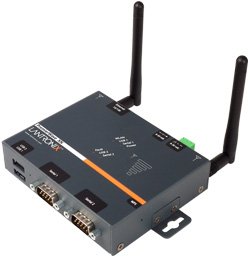| Shortcut | Description |
|---|
| Command-B | Boldface the selected text, or turn boldfacing on or off. |
| Command-I | Italicize the selected text, or turn italics on or off. |
| Command-U | Underline the selected text, or turn underlining on or off. |
| Command-T | Show or hide the Fonts window. |
| Command-D | Select the Desktop folder from within an Open dialog or Save dialog. |
| Command-Control-D | Show or hide the definition of the selected word. |
| Command-Shift-Colon (:) | Display the Spelling and Grammar window. |
| Command-Semicolon (;) | Find misspelled words in the document. |
| Option-Delete | Delete the word to the left of the insertion point. |
| Control-H | Delete the character to the left of the insertion point. Or use Delete. |
| Control-D | Delete the character to the right of the insertion point. Or use Fn-Delete. |
| Fn-Delete | Forward delete on keyboards that don't have a Forward Delete  key. Or use Control-D. key. Or use Control-D. |
| Control-K | Delete the text between the insertion point and the end of the line or paragraph. |
| Command-Delete | Select Delete or Don't Save in a dialog that contains a Delete or Don't Save button. |
| Fn–Up Arrow | Page Up: Scroll up one page. |
| Fn–Down Arrow | Page Down: Scroll down one page. |
| Fn–Left Arrow | Home: Scroll to the beginning of a document. |
| Fn–Right Arrow | End: Scroll to the end of a document. |
| Command–Up Arrow | Move the insertion point to the beginning of the document. |
| Command–Down Arrow | Move the insertion point to the end of the document. |
| Command–Left Arrow | Move the insertion point to the beginning of the current line. |
| Command–Right Arrow | Move the insertion point to the end of the current line. |
| Option–Left Arrow | Move the insertion point to the beginning of the previous word. |
| Option–Right Arrow | Move the insertion point to the end of the next word. |
| Command–Shift–Up Arrow | Select the text between the insertion point and the beginning of the document. |
| Command–Shift–Down Arrow | Select the text between the insertion point and the end of the document. |
| Command–Shift–Left Arrow | Select the text between the insertion point and the beginning of the current line. |
| Command–Shift–Right Arrow | Select the text between the insertion point and the end of the current line. |
| Shift–Up Arrow | Extend text selection to the nearest character at the same horizontal location on the line above. |
| Shift–Down Arrow | Extend text selection to the nearest character at the same horizontal location on the line below. |
| Shift–Left Arrow | Extend text selection one character to the left. |
| Shift–Right Arrow | Extend text selection one character to the right. |
| Shift–Option–Up Arrow | Extend text selection to the beginning of the current paragraph, then to the beginning of the following paragraph if pressed again. |
| Shift–Option–Down Arrow | Extend text selection to the end of the current paragraph, then to the end of the following paragraph if pressed again. |
| Shift–Option–Left Arrow | Extend text selection to the beginning of the current word, then to the beginning of the following word if pressed again. |
| Shift–Option–Right Arrow | Extend text selection to the end of the current word, then to the end of the following word if pressed again. |
| Control-A | Move to the beginning of the line or paragraph. |
| Control-E | Move to the end of a line or paragraph. |
| Control-F | Move one character forward. |
| Control-B | Move one character backward. |
| Control-L | Center the cursor or selection in the visible area. |
| Control-P | Move up one line. |
| Control-N | Move down one line. |
| Control-O | Insert a new line after the insertion point. |
| Control-T | Swap the character behind the insertion point with the character in front of the insertion point. |
| Command–Left Curly Bracket ({) | Left align. |
| Command–Right Curly Bracket (}) | Right align. |
| Command–Shift–Vertical bar (|) | Center align. |
| Command-Option-F | Go to the search field. |
| Command-Option-T | Show or hide a toolbar in the app. |
| Command-Option-C | Copy Style: Copy the formatting settings of the selected item to the Clipboard. |
| Command-Option-V | Paste Style: Apply the copied style to the selected item. |
| Command-Shift-Option-V | Paste and Match Style: Apply the style of the surrounding content to the item pasted within that content. |
| Command-Option-I | Show or hide the inspector window. |
| Command-Shift-P | Page setup: Display a window for selecting document settings. |
| Command-Shift-S | Display the Save As dialog, or duplicate the current document. |
Command–Shift–
Minus sign (-) | Decrease the size of the selected item. |
Command–Shift–
Plus sign (+) | Increase the size of the selected item. Command–Equal sign (=) performs the same function. |
Command–Shift–
Question mark (?) | Open the Help menu. |

